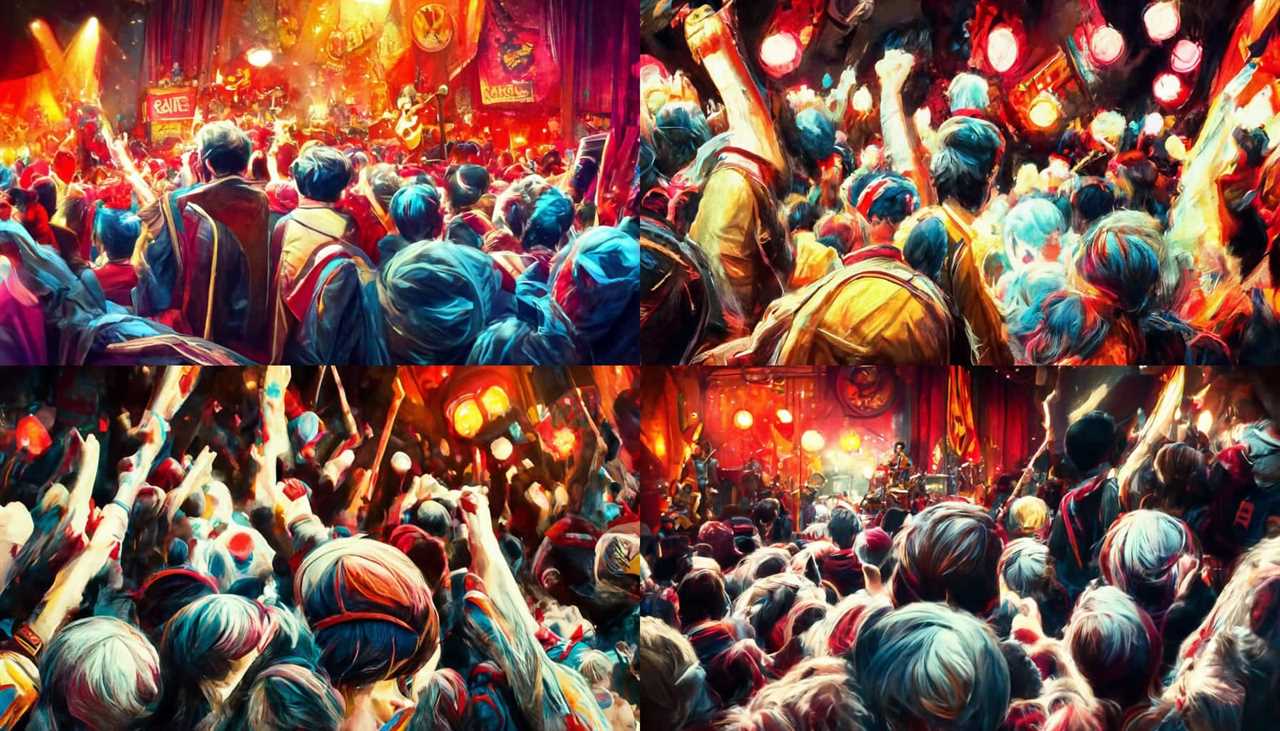As a journalist, I’ve uncovered a troubling trend in the news industry: AI-generated fake war images are deceiving outlets and spreading misinformation.
With generative AI technology, creating realistic images has become easy, allowing individuals to sell fake images of ongoing conflicts like Israel-Hamas. These images are often shared online without proper disclosure, leading readers to believe they are real.
This misuse of AI-generated images threatens news publishers’ credibility. Efforts, like the Content Authenticity Initiative, are being made to combat this issue, but cooperation from stakeholders is crucial.
Key Takeaways
- Adobe sells AI-generated images through its stock image library, and artists receive a percentage of the revenue.
- Misuse of AI-generated images, particularly in the context of the Israel-Hamas conflict, has raised concerns about the spread of misinformation.
- The lack of proper labeling and disclosure of AI-generated images in news articles has contributed to the deception of news outlets.
- Efforts like the Content Authenticity Initiative and Content Credentials aim to provide vital context about the creation and editing of digital content, including the use of AI tools, and combat the spread of misinformation.
Ai-Generated Images in Adobe Stock
As a member of the Adobe Stock team, I can confirm that AI-generated images are available in our stock image library. This development has raised both legal implications and ethical concerns.

On the legal front, the issue lies in the potential copyright infringement of these AI-generated images. Artists who create these images receive a percentage of the revenue from licensed and downloaded images, but questions arise about the ownership and licensing rights of AI-generated content.
Ethically, there are concerns about the potential misuse and misrepresentation of these images. With the increasing accessibility and ease of use of generative AI technology, individuals can create and sell fake images that depict real-world events, such as the Israel-Hamas conflict.
The lack of disclosure that these images are AI-generated when downloaded and posted elsewhere online raises concerns about the spread of misinformation.
Misuse of Ai-Generated Images
Moving forward from the previous subtopic, it’s important to address the alarming issue of how AI-generated images are being misused. The misuse of AI-generated images has significant ethical implications and a profound impact on journalism. Here are some key points to consider:

- Misleading the public: The use of AI-generated images in news articles as if they were real deceives the public and undermines the trustworthiness of journalism.
- Spreading misinformation: Small-time outlets often fail to mark these images as synthetic, leading to the spread of misinformation and false narratives.
- Lack of accountability: The lack of proper labeling and disclosure raises concerns about the accountability of news publishers in verifying the authenticity of the images they use.
- Manipulating public opinion: AI-generated images can be used to manipulate public opinion by creating fictional scenarios or exaggerating real events.
- Need for transparency: The misuse of AI-generated images highlights the urgent need for transparency in digital content and responsible journalism practices to combat the spread of misinformation.
Efforts to Tackle Misinformation
I frequently collaborate with various tech and journalism organizations, such as Adobe, Microsoft, the BBC, and the New York Times, to tackle misinformation through initiatives like the Content Authenticity Initiative. These collaborative efforts aim to implement AI safeguards and prevent the spread of misinformation.
One such initiative is Content Credentials, which utilizes file metadata to provide important context about the source and editing of digital content, including AI-generated images. However, the practical deployment of Content Credentials requires cooperation from social networks, publishers, artists, and AI developers.
To address this challenge, Adobe is actively working with stakeholders to advance the adoption of Content Credentials. By promoting transparency and responsible usage of AI-generated content, we can combat misinformation and ensure the authenticity of digital information.
Adobe’s Commitment to Fighting Misinformation
To combat misinformation, I actively engage in collaborative efforts with tech and journalism organizations like Adobe, working towards implementing AI safeguards and promoting transparency in digital content. Adobe is committed to fighting misinformation through its involvement in the Content Authenticity Initiative.

Here are five ways Adobe is addressing the issue:
- Implementing AI-powered image recognition: Adobe is developing advanced algorithms that can detect AI-generated images, ensuring that they’re properly labeled and disclosed.
- Ensuring accountability of news publishers: Adobe is working with publishers to raise awareness about the importance of proper labeling and disclosure of AI-generated content, holding them accountable for the accuracy of the information they share.
- Advancing the adoption of Content Credentials: Adobe is collaborating with publishers, camera manufacturers, and other stakeholders to promote the use of Content Credentials, which provide important information about the creation and editing of digital content.
- Developing solutions to address misuse of AI-generated images: Adobe is actively working on finding innovative solutions to combat the misuse of AI-generated images and prevent their spread as misleading information.
- Promoting transparency in digital content: Adobe is dedicated to promoting transparency by supporting initiatives like the Content Authenticity Initiative, which aims to provide vital context about the creation and editing of digital content, including the use of AI tools.
Challenges in Combating Fake War Images
One major challenge in combating fake war images is the deceptive realism of AI-generated content. The impact of these images on public perception is significant, as they can shape opinions and influence attitudes towards conflicts. When AI-generated images are used in news reporting, it raises ethical concerns about the authenticity and credibility of the information being presented.
The public relies on news outlets to provide accurate and reliable information, and the use of AI-generated images in news reporting can undermine this trust. It’s crucial for journalists and news organizations to exercise caution and verify the authenticity of the images they use. Additionally, implementing measures such as watermarking AI-generated content can help identify real and fake images, providing transparency and minimizing the spread of misinformation.
Efforts to combat fake war images require collaboration and support from social networks, publishers, artists, and AI developers to ensure the integrity of news reporting and maintain public trust.

Solutions to Identify Real and Fake Content
Implementing measures such as watermarking AI-generated content can help distinguish between real and fake images, providing transparency and minimizing the spread of misinformation. Here are some solutions to identify real and fake content:
- Using watermarking techniques: Watermarking AI-generated content with unique identifiers can help detect synthetic content and differentiate it from authentic images.
- Collaborative efforts in combatting fake war images: By bringing together tech and journalism organizations, like Adobe, Microsoft, the BBC, and the New York Times, initiatives such as the Content Authenticity Initiative can be established to promote transparency in digital content.
- Adoption of Content Credentials: This initiative utilizes file metadata to highlight the source of an image, providing vital context about its creation and editing, including the use of AI tools.
- Support from various stakeholders: Social networks, publishers, artists, and AI developers need to actively support and adopt these initiatives to ensure their effectiveness.
- Continued research and development: Companies like Adobe are actively working on developing solutions to address the misuse of AI-generated images and combat the spread of misinformation.
The Importance of Cooperation Among Stakeholders
In my experience, collaboration among stakeholders is crucial in addressing the spread of AI-generated fake war images and promoting transparency in digital content. Cooperation among social networks, publishers, artists, and AI developers is essential to combat misinformation and uphold ethical standards. The ethical implications of AI-generated fake war images are significant, as they can deceive news outlets and mislead the public. To tackle this issue, efforts like the Content Authenticity Initiative and the implementation of Content Credentials are being made. These initiatives highlight the importance of providing context about the creation and editing of digital content, including the use of AI tools. However, the practical deployment of such solutions requires the support and adoption of various stakeholders. By working together, we can effectively address the challenges posed by AI-generated fake war images and promote the integrity of digital content.
| Cooperation Among Stakeholders to Combat Misinformation | Ethical Implications of AI-Generated Fake War Images | Promoting Transparency in Digital Content |
|---|---|---|
| Collaboration among social networks, publishers, artists, and AI developers is crucial | AI-generated fake war images have significant ethical implications | Efforts like the Content Authenticity Initiative and Content Credentials |
| Stakeholders need to work together to combat misinformation | These images deceive news outlets and mislead the public | Provide vital context about the creation and editing of digital content |
| The support and adoption of various stakeholders is necessary | Misuse of AI-generated images raises concerns about the spread of misinformation | Uphold ethical standards and ensure transparency in digital content |
| Cooperation is essential in addressing the challenges posed by AI-generated fake war images | AI will increasingly be used to spread fake content online | Foster trust and credibility in news outlets and digital platforms |
Adobe’s Role in Promoting Transparency in Digital Content
Adobe plays a crucial role in promoting transparency in digital content by actively working to combat the spread of AI-generated fake war images. Through its involvement in the Content Authenticity Initiative, Adobe is dedicated to promoting accountability and ensuring authenticity in digital images. Here are five ways Adobe is contributing to this goal:
- Adobe Stock requires generative AI content to be labeled as such when submitted for licensing, providing transparency to buyers and users.
- Adobe is collaborating with publishers, camera manufacturers, and other stakeholders to advance the adoption of Content Credentials, which allows users to see important information about how digital content was created or edited.
- The Content Authenticity Initiative aims to provide vital context about the creation and editing of digital content, including the use of AI tools.
- Adobe is actively working on developing solutions to address the misuse of AI-generated images, recognizing the need to combat misinformation and promote transparency.
- Efforts like watermarking AI-generated content are being explored to help identify real and fake content, further enhancing transparency and accountability.
With these initiatives, Adobe is taking significant steps to ensure the authenticity and credibility of digital content, thereby promoting transparency and combating the spread of misinformation.

Conclusion
In the world of digital content, the rise of AI-generated fake war images has become a troubling trend. These deceptive images not only mislead news outlets but also spread misinformation to the public.
Efforts are being made to combat this issue, such as the Content Authenticity Initiative. However, tackling this problem requires cooperation from various stakeholders.
By promoting transparency and working together, we can strive for a future where accurate information prevails over deception in digital content.











